Juha I. Uitto's Blog, page 9
April 22, 2014
Sustainability Evaluation - American Evaluation Association Blog
EPE TIG Week: Juha Uitto on Sustainability Evaluation and the Need to Keep an Eye on the Big PictureHi all! I’m Juha Uitto, Deputy Director of the Independent Evaluation Office of the United Nations Development Programme (UNDP). I’ve spent many years evaluating environment and development in international organizations, like UNDP and the Global Environment Facility (GEF).
As we all know, evaluating sustainability is not easy or simple. Sustainability as a concept and construct is complex. It is by definition multidimensional encompassing environmental, social, cultural, political and economic dimensions. It cannot be evaluated from a single point of view or as just one dimension of a programme. Apart from the above considerations, sustainability refers to whether the programme or intervention that is the evaluand is in itself sustainable. Sustainability evaluation, must take all of the above into account.
At its simplest, sustainability evaluation would look into whether the intervention would ‘do no harm’ when it comes to the various environmental, social, cultural and other dimensions that may or may not be the main target of the programme. At this level, the evaluation does little more than ensuring that safeguards are in place. The evaluation also has to look at whether the intervention itself was sustainable, i.e. whether it has developed exit strategies so benefits will continue beyond the life of the intervention.
But this is not enough. It is essential for evaluations and evaluators to be concerned with whether the evaluand makes a positive difference and whether it has unintended consequences. In environment and development evaluation a micro-macro paradox is recognized: evaluations show that many individual projects are performing well and achieving their stated goals; yet the overall trends are downward. There are lots of projects focused on protected areas and biodiversity conservation; still, we are facing one of the most severe species extinction crises ever. Many projects successfully address climate change mitigation in various sectors ranging from industry to transportation to energy; still, the global greenhouse gas emissions continue their rising trend. It is not enough for evaluators to focus on ascertaining that processes, activities, outputs and immediate outcomes are achieved.
Lessons learned: In evaluating environment and poverty linkages, one should never underestimate the silo effect. Sustainable development requires a holistic perspective but few organizations operate that way. People have their own responsibilities, priority areas, disciplinary perspectives, partners, networks, and accountabilities that often preclude taking a holistic perspective. Evaluators must rise above such divisions. An evaluation – such as the Evaluation of UNDP Contributions to Environmental Management for Poverty Reduction – can make a major contribution to how an organization acknowledges, encourages and rewards intersectoral and transdisciplinary cooperation.
Rad resource: All UNDP evaluation reports and management responses to them are available on a publicly accessible website, the Evaluation Resources Centre, and independent evaluations at Independent Evaluation Office of UNDP.
The American Evaluation Association is celebrating Environmental Program Evaluation TIG Week with our colleagues in the Environmental Program Evaluation Topical Interest Group. The contributions all this week to aea365 come from our EPE TIG members. Do you have questions, concerns, kudos, or content to extend this aea365 contribution? Please add them in the comments section for this post on the aea365 webpage so that we may enrich our community of practice. Would you like to submit an aea365 Tip? Please send a note of interest to aea365@eval.org . aea365 is sponsored by the American Evaluation Association and provides a Tip-a-Day by and for evaluators.
http://aea365.org/blog/epe-tig-week-juha-uitto-on-sustainability-evaluation-and-the-need-to-keep-an-eye-on-the-big-picture/
As we all know, evaluating sustainability is not easy or simple. Sustainability as a concept and construct is complex. It is by definition multidimensional encompassing environmental, social, cultural, political and economic dimensions. It cannot be evaluated from a single point of view or as just one dimension of a programme. Apart from the above considerations, sustainability refers to whether the programme or intervention that is the evaluand is in itself sustainable. Sustainability evaluation, must take all of the above into account.
At its simplest, sustainability evaluation would look into whether the intervention would ‘do no harm’ when it comes to the various environmental, social, cultural and other dimensions that may or may not be the main target of the programme. At this level, the evaluation does little more than ensuring that safeguards are in place. The evaluation also has to look at whether the intervention itself was sustainable, i.e. whether it has developed exit strategies so benefits will continue beyond the life of the intervention.
But this is not enough. It is essential for evaluations and evaluators to be concerned with whether the evaluand makes a positive difference and whether it has unintended consequences. In environment and development evaluation a micro-macro paradox is recognized: evaluations show that many individual projects are performing well and achieving their stated goals; yet the overall trends are downward. There are lots of projects focused on protected areas and biodiversity conservation; still, we are facing one of the most severe species extinction crises ever. Many projects successfully address climate change mitigation in various sectors ranging from industry to transportation to energy; still, the global greenhouse gas emissions continue their rising trend. It is not enough for evaluators to focus on ascertaining that processes, activities, outputs and immediate outcomes are achieved.
Lessons learned: In evaluating environment and poverty linkages, one should never underestimate the silo effect. Sustainable development requires a holistic perspective but few organizations operate that way. People have their own responsibilities, priority areas, disciplinary perspectives, partners, networks, and accountabilities that often preclude taking a holistic perspective. Evaluators must rise above such divisions. An evaluation – such as the Evaluation of UNDP Contributions to Environmental Management for Poverty Reduction – can make a major contribution to how an organization acknowledges, encourages and rewards intersectoral and transdisciplinary cooperation.
Rad resource: All UNDP evaluation reports and management responses to them are available on a publicly accessible website, the Evaluation Resources Centre, and independent evaluations at Independent Evaluation Office of UNDP.
The American Evaluation Association is celebrating Environmental Program Evaluation TIG Week with our colleagues in the Environmental Program Evaluation Topical Interest Group. The contributions all this week to aea365 come from our EPE TIG members. Do you have questions, concerns, kudos, or content to extend this aea365 contribution? Please add them in the comments section for this post on the aea365 webpage so that we may enrich our community of practice. Would you like to submit an aea365 Tip? Please send a note of interest to aea365@eval.org . aea365 is sponsored by the American Evaluation Association and provides a Tip-a-Day by and for evaluators.
http://aea365.org/blog/epe-tig-week-juha-uitto-on-sustainability-evaluation-and-the-need-to-keep-an-eye-on-the-big-picture/
Published on April 22, 2014 07:56
February 16, 2014
Good Music - Still Kicking
 It is the wont of older generations to denigrate the musical tastes of those who come after. Music and fashions change, but is it really always to the worse? It seems unreasonable to think that a whole generation has suddenly gone tone deaf. Yet, this seems to be the argument we elders often put forward. I’ve often thought about this and am always self-conscious about keeping my ears and mind open to new music and trends.
It is the wont of older generations to denigrate the musical tastes of those who come after. Music and fashions change, but is it really always to the worse? It seems unreasonable to think that a whole generation has suddenly gone tone deaf. Yet, this seems to be the argument we elders often put forward. I’ve often thought about this and am always self-conscious about keeping my ears and mind open to new music and trends.In December in Tokyo I spent a couple of days with my friend and cohort Naoko. She actively despairs about the state of the current music scene, to the extent that she would contemplate moving out of the country. It is true that much of Japanese pop is calculatedly commercial pap that is being produced and promoted by professional marketers whose main motivation certainly is not to create innovative or touching music. The extremely popular girl group AKB48appears to be Naoko’s principal hate object (ironically, Naoko who is a dress designer and maker, once produced outfits for the troupe). The girl group’s musical merits are negligible, but that’s beyond the point: their sales pitch focuses on the visual effect of a large group of pretty young women in short skirts hopping around a stage in a more or less synchronized manner. AKB48 is a product, which is proven by the fact that there now are regional franchises of the brand in other cities, such as Osaka. (Perhaps I’m biased, but to me the similarly marketed boy bands in Japan are even more horrible.)
 In an attempt to console Naoko, I kept telling her that it’s not worth leaving Japan because of the proliferation of bad commercial music. She would just be faced with the same phenomenon wherever she went. After all, who is more popular amongst teenage girls in the States than Justin Bieber? At least in Japan the image of such groups appears to be somewhat less vulgarly sexual than, say, that of Miley Cyrus and other girls barely out of their teens on this continent. (This point, I have to confess, I am not making confidently. It may only reflect the Lolita complex of so many Japanese males: the eroticism of innocence.) Similarly, young women in Japan don’t seem to feel the same need to prove their toughness as their counterparts in the West, but rather use their feminine assets to get their way. (The photos in this blog demonstrate the point. I took them during a student festival at Kyoto University in November. The performers are elite students from the highly prestigious institution of higher education.)
In an attempt to console Naoko, I kept telling her that it’s not worth leaving Japan because of the proliferation of bad commercial music. She would just be faced with the same phenomenon wherever she went. After all, who is more popular amongst teenage girls in the States than Justin Bieber? At least in Japan the image of such groups appears to be somewhat less vulgarly sexual than, say, that of Miley Cyrus and other girls barely out of their teens on this continent. (This point, I have to confess, I am not making confidently. It may only reflect the Lolita complex of so many Japanese males: the eroticism of innocence.) Similarly, young women in Japan don’t seem to feel the same need to prove their toughness as their counterparts in the West, but rather use their feminine assets to get their way. (The photos in this blog demonstrate the point. I took them during a student festival at Kyoto University in November. The performers are elite students from the highly prestigious institution of higher education.)Commercial music has always been around, of course, and maybe it is that the production companies have got a stronger hold of what is being created and marketed. Naoko and I grew up at a very special time in history when an extraordinary amount of new original music was blowing our collective minds. This music was part of a counterculture revolution and we came to be defined by it. We are too young to have observed the British Invasion when The Beatles and The Rolling Stones, The Kinks and The Animals, and many others, broke new ground on their versions of rock ’n’ roll and rhythm ‘n’ blues. Somewhat sadly, we also missed the height of the hippie scene and never experienced the summer of love first hand. But we grew up with bands like Pink Floyd, King Crimson and Deep Purple, with a psychedelic need to include a colour in their names, as well as other highly innovative enterprises, such as Led Zeppelin, Cream and Jethro Tull (and the fantastic Finnish band Wigwam). We identified with the music and the music was a major—if not themajor—part of the identity of our entire generation. In my own case, although I loved all of those bands, my primary identity was defined by modern jazz.
Then everything changed. Disco became popular and someone invented the drum machine to ensure an unwavering beat would keep the dancers moving under the disco ball. Audiences grew weary of lengthy suites with multiple parts, changing tempos and elaborate guitar and Moog solos. This dumbing down coincided with an overall change in culture and politics: young people became less critical of the society, wholeheartedly embraced capitalism, and never let their hair grow. And it’s been downhill ever since, many in my age group would argue.
I refuse to believe that the proportion of musically talented people in the population suddenly dropped so dramatically. I have another explanation. The share of people who truly are serious about music—whether as creators or as listeners—is relatively low and remains more or less constant over time. Still relatively recently, say in the late-19thcentury, “serious” music was the preoccupation of elites. There were no recordings and most people would not be inclined to go to concerts (or to afford it); for them, music was mostly entertainment provided by fiddlers and other jolly fellows in taverns and dances. The cream of the society would go to concerts and be confronted not only by lofty music, but by a social scene in which to be seen and to mingle with other wealthy people. There, too, the music was entertainment and audiences would often be shocked by the more adventurous composers (my friend Vesa who is a leading music critic in Finland recently published an excellent essay making a parallel between Verdi and Wagner, and the Stones and The Beatles). My guess is that most of the people attending concerts in Vienna or in Paris would not have a particularly high ability to absorb the finer points of the music they heard. That was not the primary purpose for many to go to the concerts.
The rise of popular music and recordings in the 20th century led to a change. Jazz spread around the world from its origins in New Orleans and the US South. Although many of the early star players were virtuosos on their instruments (whether they could read music or not), jazz was not particularly sophisticated or high-brow. Although people like Duke Ellington started to write advanced arrangements for larger orchestras early on, it was easy listening and easy dancing qualities that tended to dominate. One of the tests of a good drummer was whether he would be able to keep dancers on the parquet during a drum solo – Gene Krupa’s reputation was partly based on this ability. The be-bop revolution of the second half of the 1940s was a reaction to the prevalence of the simplistic styles in jazz. Innovators, such as Charlie Parker, Thelonius Monk, Bud Powell, Dizzy Gillespie, Charlie Mingus and Kenny Clarke, put the emphasis on complex harmonies and advanced improvisation creating music that was impossible for most of the old guard to emulate. Be-bop was the music of musicians and, needless to say, never appealed to mainstream audiences.
In the next two decades or so, jazz evolved further, often towards an ever freer and more experimental direction. People like Ornette Coleman and Eric Dolphy stretched the definition of harmony in music. Arguably, the most important of all was John Coltrane whose own evolution from a hard bop saxophonist to a deeply spiritual musician pushed the frontiers of jazz and music in general ever further from the commercial mainstream. In fact, some writers have suggested that Coltrane killed jazz in the 1960s by taking it so far out of reach from the average listener. I don’t believe this to be a fair accusation, but it does resonate with my main point, that is: the majority of people have always wanted music to be easy entertainment for them.
Until around World War II it was difficult to draw a line between jazz and popular music. Jazz was popular music. Even after the be-bop revolution popular crooners like Frank Sinatra continued their own style of jazz or swing. Rock ‘n’ roll was born from the roots of swing and the rhythm ‘n’ blues music of the black population in the US. Chuck Berry, Little Richard and others built upon a foundation that had been there for a long time, while the white guys—Bill Haley, Elvis and others—brought in elements of country ‘n’ western making the mix more palatable to white audiences. The Brits further modified the music. The rise of rock-based pop coincided with a massive social change in the United States and Western Europe, which emphasized youth culture. The opposition to the Vietnam War, brutal suppression of protests on American university campuses, the civil rights movement, Black consciousness, Prague Spring and its crushing, psychedelia, the Summer of Love all were aspects of the era, which allowed creative musicians to develop their craft and push the envelope ever farther. Many jazz musicians also were in on the trend. Herbie Hancock and, perhaps the greatest creative chameleon ever, Miles Davis, made genre-busting music performing in venues like the Fillmore. In 1968, the sax and flute man, Charles Lloyd, played the Newport Pop Festival attended by some 140,000 people.
That moment in history would seem to have been an anomaly, when often complex, experimental music became the mainstream. Still, it is likely that the generation was not exceptionally talented musically. Rather, I would argue it was the zeitgeistthat allowed innovative music to assume such a central role in mass culture. Perhaps all these social changes, questioning of the norms set by the establishment, opened up young people’s minds and allowed them to embrace the music without prejudice. Alas, the moment did not last.
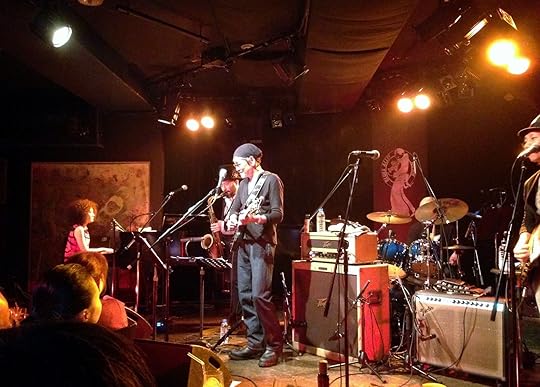
That is not to say that there is no good music being produced today—on the contrary. It just often gets drowned in the commercial drone of mindless entertainment. Jazz is alive and well; and even in the commercial mainstream much of high quality good music is being made. Although the ‘soul’ music of Beyoncé and Rihanna is not the soul of James Brown or Sam & Dave, it is still good and professionally made music. Globalization has enriched music by adding to the mix from other cultures: Africa, Asia, Latin America and the Caribbean. Even in Japan, there are new artists – check out Ikimono-Gakari or Hajime Chitose, to name a couple – creating fresh and interesting pop with a distinct flavour. Many of the older generation—in the East and the West—also continue to evolve with the times, while keeping their own personality. Last December in Tokyo my friend Timo and I listened to a powerful performance by the legendary Japanese blues man Fusanosuke Kondo at a sold-out club.
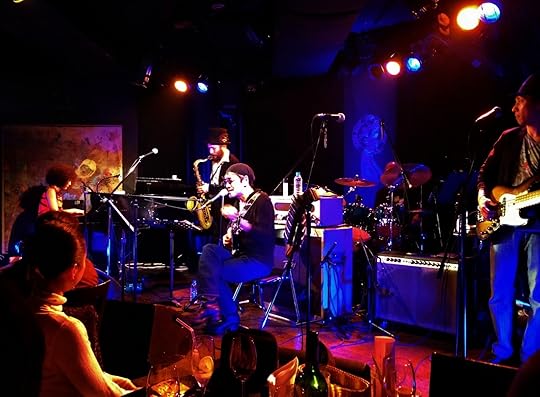 More worrying to me is the trend that young people today are not willing to pay for music. Free downloading cuts directly into the income of musicians and composers – and especially those who are outside of the mainstream and can’t compensate by volume for the lost revenue. Online music services like Spotify and Pandora have not yet managed to work out a business plan that would allow them to thrive while compensating the artists fairly. In Japan, unlike in the West, still 60 percent of music sales are as CDs. But that’s another story. Where I live in Williamsburg, Brooklyn, the live music scene is bustling. A few months ago when Vesa was visiting we went to one of the clubs in the neighbourhood to catch some new bands. The ones we listened to were quite good and original, with skilful players. Still nobody stretched out with a long fiery guitar solo. It was a pity.
More worrying to me is the trend that young people today are not willing to pay for music. Free downloading cuts directly into the income of musicians and composers – and especially those who are outside of the mainstream and can’t compensate by volume for the lost revenue. Online music services like Spotify and Pandora have not yet managed to work out a business plan that would allow them to thrive while compensating the artists fairly. In Japan, unlike in the West, still 60 percent of music sales are as CDs. But that’s another story. Where I live in Williamsburg, Brooklyn, the live music scene is bustling. A few months ago when Vesa was visiting we went to one of the clubs in the neighbourhood to catch some new bands. The ones we listened to were quite good and original, with skilful players. Still nobody stretched out with a long fiery guitar solo. It was a pity.
Published on February 16, 2014 19:37
December 11, 2013
Autumn in Kyoto

Visiting Kyoto in the autumn when the days are crisp, the skies are blue and the leaves are aflame is a special kind of treat. The temples in the hills surrounding the city become destinations of modern day pilgrimage for thousands and again thousands of visitors who come to revel in the rarefied atmosphere. The Japanese are known to appreciate nature and the changing of seasons is of particular importance to the culture. Still in this postmodern society cuisines change with the seasons reflecting what foodstuffs are available at a particular time of the year. One of the fundamentals of the Japanese aesthetic is the ephemeral nature of beauty. The lush green forests turn to bright red and yellow before the leaves fade into shades of brown prior to dying and falling.
Since I arrived just over a month ago, I have spent much of my free time visiting the temples and the shrines. Luckily for me, I am staying in Sakyo ward in the northeast of the city, just next to the Kyoto University main campus, which gives me ready access to many of the most revered temples in the Higashiyama—East Mountain—area.

 On my second Sunday in town, my old friend Taka picked me up from my apartment and we spent a long day walking around the temples in this area. We started with Kurodani, with the Konkai-Komyoji temple founded in 1175, one of the eight main temples of the Jodo sect of Buddhism. I can actually see this handsome structure perched on the side of Higashiyama from my apartment building. Like many temples in Kyoto, Kurodani was destroyed and rebuilt several times after it was recovering from unrest or other mishaps. In 1934 it was destroyed by a fire but again reconstructed in its old image in 1942. In the Japanese tradition, this does not in any way reduce the value of the historic building. After all, these are wooden structures and therefore vulnerable to fire. In the appreciation through all five senses, the smell of new wood as the temple is being rebuilt adds to its charm.
On my second Sunday in town, my old friend Taka picked me up from my apartment and we spent a long day walking around the temples in this area. We started with Kurodani, with the Konkai-Komyoji temple founded in 1175, one of the eight main temples of the Jodo sect of Buddhism. I can actually see this handsome structure perched on the side of Higashiyama from my apartment building. Like many temples in Kyoto, Kurodani was destroyed and rebuilt several times after it was recovering from unrest or other mishaps. In 1934 it was destroyed by a fire but again reconstructed in its old image in 1942. In the Japanese tradition, this does not in any way reduce the value of the historic building. After all, these are wooden structures and therefore vulnerable to fire. In the appreciation through all five senses, the smell of new wood as the temple is being rebuilt adds to its charm.
 Just north of Kurodani is Shinnyo-do, a temple of the Tendai sect, with a lovely garden. As we visited, the Japanese momiji maples were at their best autumn colours almost obscuring the tall pagoda. For some unfathomable reason, Shinnyo-do has remained in relative obscurity, although it is a very old—established in 984—and beautiful place. Consequently, even now the temple gardens were relatively less crowded (with emphasis on the word relatively).
Just north of Kurodani is Shinnyo-do, a temple of the Tendai sect, with a lovely garden. As we visited, the Japanese momiji maples were at their best autumn colours almost obscuring the tall pagoda. For some unfathomable reason, Shinnyo-do has remained in relative obscurity, although it is a very old—established in 984—and beautiful place. Consequently, even now the temple gardens were relatively less crowded (with emphasis on the word relatively).
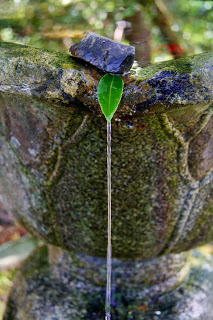 Crossing the Shirakawa river valley, we continued to Honen-in, a small temple established relatively late in 1680. It received its name from the priest Honen (1133-1212), founder of the Jodo-shu sect. Honen-in was originally built as a training hall for Buddhist chant, Shishigatani, closely associated with Honen. There is nothing spectacular about Honen-in, but to me it is one of the loveliest of all the temples. Its garden is a true haven of tranquility.
Crossing the Shirakawa river valley, we continued to Honen-in, a small temple established relatively late in 1680. It received its name from the priest Honen (1133-1212), founder of the Jodo-shu sect. Honen-in was originally built as a training hall for Buddhist chant, Shishigatani, closely associated with Honen. There is nothing spectacular about Honen-in, but to me it is one of the loveliest of all the temples. Its garden is a true haven of tranquility.Our next destination was further up, one of the most famous temples of all, Ginkakuji. A Zen temple, Ginkakuji was established in 1482 during the Muromachi Shogunate. Its formal name was Higashiyama Jishōji but it is commonly known as Ginkakuji, the silver pavilion. Ginkakuji was originally built by the Shogun Ashikaga Yoshimasa as a restful place of retirement for himself, that would afterwards be designated as temple. At its heart is a two-storied pagoda, Kannon-den, between a rock garden and beautiful pond. The temple area is quite large and extends up on a steep hillside from where the view over the Kannon-den and its garden down onto the city is magnificent.


Having already walked for hours in the fresh air, we headed towards the oldest ramen shop in the city, Ramen Masutani. Still in mid-afternoon there was a brief wait outside before we could enter. The place has served its limited choice of ramen-noodles here for some 60 years. With the exception of a bowl of rice, there is nothing else on the menu. The drink choices are water or tea. The pork ramen that I had was one of the best I’ve ever enjoyed – and not only because of hunger.
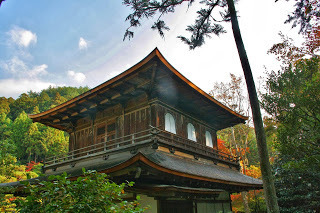
Thus fortified, we were ready to continue walking and headed down the famed Tetsugaku-no-michior the Philosophers’ Path. The autumn sun was already starting its descent and the late afternoon was golden. We followed the path alongside many people on their afternoon stroll or on their way to one of the many cafés or restaurants, the Japanese always well-dressed and stylish. One segment of the path is famous for having a large cat population. They appear to be semi-domesticated and many people stop to pet or feed them.
We still had the strength to visit one more temple, the Eikando Zenrin-ji. The sun was already fading behind the mountains and dusk had settled on the valley. The Zenrin-ji temple was established on this site in the Heian period around 853. Some two centuries later, Eikan (1033-1111) became the head priest of the temple. He was known as a devoted soul, intoning the Nembutsuchant as many as 60,000 times every day, and never sparing his efforts to help poor people. He thus earned everyone’s respect and at some point of time people started calling the Zenrin-ji simply Eikando. It is one of the temples with the most beautiful autumn leaves or kouyou. There is a small rock garden in front of the main temple and through the gates I could see four young ladies wearing beautiful kimonos resting on the wooden steps admiring the garden. Such a lovely sight, and one that could have been the same hundreds of years ago.


We circled the temple and climbed up behind it. The lights were already coming on inside and in the garden lanterns. Suddenly we ran into the four women in kimonos and start chatting with them. They were friendly and gorgeous in their exquisite dress, so I could not help but ask for their permission to take their photograph.

On the following weekend I was alone and decided to walk across the city from east to west. Kyoto is a fabulous walking city. The traffic is well organized, although especially around the universities one has to be careful of the bicycles, and there is always something nice to observe. At some 1.4 million inhabitants, it is not a huge megalopolis either. Having said that, the distances may be longer than they appear on the map—on this Saturday I estimated having walked around 12 kilometres, crossing the Kamogawa river and heading towards the mountains on the opposite side of town.
 My first stop was the Kitano-Tenmangu shrine, one of the very important shrines in the country. Unlike the temples, this was a Shinto shrine. One of the most delightful aspects of Japan’s spiritual life is its flexibility. It is said that 80 percent of the Japanese are Buddhist, and 90 percent are Shintoist. There is no contradiction here and celebrations and rituals are conducted in one or the other largely depending on their appeal. Shinto, as an original Japanese nature-based religion—or philosophy—is quite attractive, although it did get slightly tainted in connection with the militarism of the first part of the 20th century. Kitano-Tenmangu is dedicated to Sugawara Michizane, a scholar and politician who was wrongfully accused and exiled to the southwestern island of Kyushu where he died in 903. After his death there were severe earthquakes and storms that caused considerable damage, which were widely thought to be caused by his wrath. Consequently, the Imperial Court posthumously granted him the title of Karai TenJin (God of Fire and Thunder). As I visited Kitano-Tenmangu it was peaceful with many women and little girls wearing beautiful kimonos.
My first stop was the Kitano-Tenmangu shrine, one of the very important shrines in the country. Unlike the temples, this was a Shinto shrine. One of the most delightful aspects of Japan’s spiritual life is its flexibility. It is said that 80 percent of the Japanese are Buddhist, and 90 percent are Shintoist. There is no contradiction here and celebrations and rituals are conducted in one or the other largely depending on their appeal. Shinto, as an original Japanese nature-based religion—or philosophy—is quite attractive, although it did get slightly tainted in connection with the militarism of the first part of the 20th century. Kitano-Tenmangu is dedicated to Sugawara Michizane, a scholar and politician who was wrongfully accused and exiled to the southwestern island of Kyushu where he died in 903. After his death there were severe earthquakes and storms that caused considerable damage, which were widely thought to be caused by his wrath. Consequently, the Imperial Court posthumously granted him the title of Karai TenJin (God of Fire and Thunder). As I visited Kitano-Tenmangu it was peaceful with many women and little girls wearing beautiful kimonos.

My main target that day was the Kinkakuji, one of the most famous temples in the city and the country, indeed the world. Unlike Ginkakuji, which does not have any actual silver, Kinkakuji is covered with gold foil on lacquer. Located in the foothills in the northwest of the city, there was a bit of a hike to reach the place. When I did, I realized that I certainly was not the only one with the same idea. There must have been thousands of people: Japanese, Chinese, other Asians, Westerners. According to Taka, the fastest growing group of tourists in Japan are Thai, as their economy grows and the exchange rate of Yen to Baht has gone down.

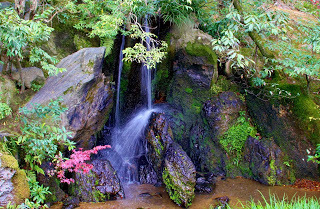
The temples of Kyoto are generally wealthy. They usually charge a reasonable entrance fee but with the hundreds of thousands of visitors every year this translates into considerable sums. The temples’ income is also tax free. This has resulted in the fact that this common patrimony of humankind is very well preserved and maintained. There is also money left over, as can be often seen from the monks’ residences and the luxury cars that are parked in front of them. In Japan, the image of penniless Buddhist monks leading an ascetic life is not entirely accurate.
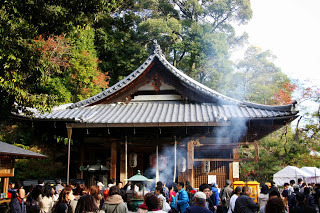
 Kinkakuji in all its glory is unique in the world. It is breath-taking as it stands in front of the immaculate pond that reflects its image on the calm surface. Behind and around it, the dark hills were speckled with stunning colours. The Golden Pavilion is a shariden or a Buddhist hall actually containing some relics of Buddha. It is said to represent Muromachi era Imperial aristocratic style and combines elements of Chinese architecture. The pavilion itself is part of a Zen temple called Rokuon-ji. The Muromatsu era Shogun Ashikaga Yoshimitsu (the grandfather of the builder of the Ginkakuji) acquired the area in 1397 and built his villa Kitayama-den (North Mountain villa) there.
Kinkakuji in all its glory is unique in the world. It is breath-taking as it stands in front of the immaculate pond that reflects its image on the calm surface. Behind and around it, the dark hills were speckled with stunning colours. The Golden Pavilion is a shariden or a Buddhist hall actually containing some relics of Buddha. It is said to represent Muromachi era Imperial aristocratic style and combines elements of Chinese architecture. The pavilion itself is part of a Zen temple called Rokuon-ji. The Muromatsu era Shogun Ashikaga Yoshimitsu (the grandfather of the builder of the Ginkakuji) acquired the area in 1397 and built his villa Kitayama-den (North Mountain villa) there.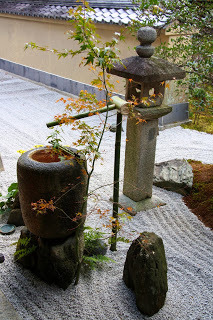 Heading back east to my own den, I passed by Daitoku-ji, another Zen temple of the Rinzai school, established in 1315. In later centuries it became an important cultural centre and was associated with, i.a., the legendary military leader and politician Toyotomi Hideyoshi (1537-1598) and tea ceremony master Sen-no-Rikyu (1522-1591). As I entered the area, I noticed that one of the sub-temples was exceptionally open to visitors. Oubai-in’s history is closely related to the famous lord Oda Nobunaga who commissioned the building of a hermitage to the memory of his father, which afterwards was named Oubai-in. Lord Oda Nobunaga appointed Toyotomi Hideyoshi as the military governor of Kyoto. When Oda Nobunaga was murdered in 1582, Toyotomi Hideyoshi built a mausoleum to him at Oubai-in. The relatively small temple derives its name from a place in China with deep Buddhist roots. The main building and its Chinese style gate were renovated in 1586. The gardens of Oubai-in are exquisite and peace reigns inside. There is the Hatou-Tei rock garden, and Jikichu-Tei, a Chisen style garden created by Sen-no-Rikyu. I felt very lucky to be able to visit this delicate and serene place.
Heading back east to my own den, I passed by Daitoku-ji, another Zen temple of the Rinzai school, established in 1315. In later centuries it became an important cultural centre and was associated with, i.a., the legendary military leader and politician Toyotomi Hideyoshi (1537-1598) and tea ceremony master Sen-no-Rikyu (1522-1591). As I entered the area, I noticed that one of the sub-temples was exceptionally open to visitors. Oubai-in’s history is closely related to the famous lord Oda Nobunaga who commissioned the building of a hermitage to the memory of his father, which afterwards was named Oubai-in. Lord Oda Nobunaga appointed Toyotomi Hideyoshi as the military governor of Kyoto. When Oda Nobunaga was murdered in 1582, Toyotomi Hideyoshi built a mausoleum to him at Oubai-in. The relatively small temple derives its name from a place in China with deep Buddhist roots. The main building and its Chinese style gate were renovated in 1586. The gardens of Oubai-in are exquisite and peace reigns inside. There is the Hatou-Tei rock garden, and Jikichu-Tei, a Chisen style garden created by Sen-no-Rikyu. I felt very lucky to be able to visit this delicate and serene place.
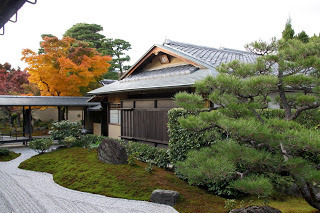
The glow of the autumn leaves is indeed ephemeral (although, as Taka pointed out, at least it lasts for some weeks, unlike the three-day peak of the sakuraor cherry blossoms in the spring time). The other day we walked back to Shinnyo-do on our way to an amazing lunch at a small restaurant called Nashimote that grills fish and meat on charcoals (but that’s another story). Just in the intervening weeks the temple garden had lost half of the leaves and the greens and yellows were now distinctly blood red and rust brown. This was another kind of beauty, no longer as exuberant as before, but more subdued and sensitive.

Now that it’s already almost mid-December (oh, how time flies!), the kouyouseason is almost over. The days are still sunny and comfortable, but the nights are getting cold. The persimmon fruit—kaki—hang orange from bare branches. The nearby Okazaki shrine, dedicated to fertility and safe birth as symbolized by the rabbit, appears deserted, although from somewhere deep inside I can hear a group practicing ancient gagaku music.
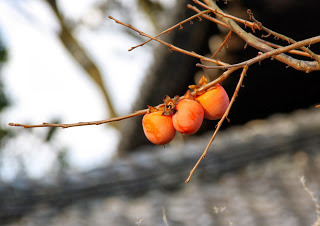
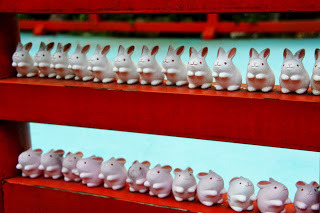
Tonight I took my washtub, towel and soap and wandered into the neighbourhood public bath, sento, to soak in a hot tub with other men from the area. (One thing that Japan has in common with my native Finland is the healthy natural relationship with nudity and total strangers never hesitate to lounge together naked.) It is clear that winter is coming and the autumn leaves on the ground will soon be covered with snow.
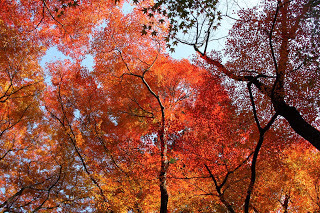
Published on December 11, 2013 06:44
September 27, 2013
Icelandic Rain
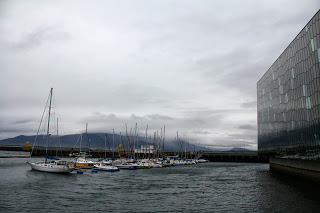 Bad weather is not entirely unexpected in Iceland, but I still think I had bad luck during my brief stopover there. My first morning in Reykjavik was grey and chilly. It was as if the sun didn’t rise at all. At this latitude in the middle of the North Atlantic, 1st of September spells autumn. I was up quite early and ventured outside right after breakfast. It was Sunday and the streets in the city centre were deserted. No wonder, as the parties had gone on until early morning. Although I hadn’t partaken in any party the night before, I had had my share of noise from the merrymakers. Every Saturday night in Reykjavik is like a carnival, I had heard and last night’s experience seemed to confirm this. The room in my hotel where I just had had breakfast, doubles as a microbrewery bar (one would think that in Iceland every brewery is a microbrewery and that distinction be somewhat redundant) from afternoon until the wee hours. I was impressed that they had managed to clean it up perfectly for the morning meal in the couple of hours in between.
Bad weather is not entirely unexpected in Iceland, but I still think I had bad luck during my brief stopover there. My first morning in Reykjavik was grey and chilly. It was as if the sun didn’t rise at all. At this latitude in the middle of the North Atlantic, 1st of September spells autumn. I was up quite early and ventured outside right after breakfast. It was Sunday and the streets in the city centre were deserted. No wonder, as the parties had gone on until early morning. Although I hadn’t partaken in any party the night before, I had had my share of noise from the merrymakers. Every Saturday night in Reykjavik is like a carnival, I had heard and last night’s experience seemed to confirm this. The room in my hotel where I just had had breakfast, doubles as a microbrewery bar (one would think that in Iceland every brewery is a microbrewery and that distinction be somewhat redundant) from afternoon until the wee hours. I was impressed that they had managed to clean it up perfectly for the morning meal in the couple of hours in between.
Reykjavik is a rather small town but still it and its suburbs are home to two-thirds of the entire population of 305,000 in the country. The centre of the city is compact and very friendly for walking. I headed down the pedestrian street past many shops and restaurants that all were closed at this hour. I observed the opera house—albeit small, Iceland has all aspects of social and cultural life covered—and headed further to the port. I only saw one person, a woman walking with an umbrella against the wind and slowly intensifying rain. They ocean was steel grey. A long row of leisure yachts bobbed in the waves against the backdrop of mist covered mountains. It was gloomy and I loved it.
As I only had this one day to explore, I had done what I normally would not consider: booked myself on a day trip with a bunch of other tourists. I and a few others were picked up by a minibus from the centre and delivered to a bus station a bit further out where we switched to a full-sized bus. This was the reverse procedure from yesterday when the airport bus left me at the same bus station to catch a minibus. The city centre streets are too narrow to accommodate big buses. There was a guide, a 51-year old man called Leidur, who would keep us entertained during the bus ride. The bus was almost full. It turned out, when Leidur took stock of his charges at the beginning of the trip, that more than half of the passengers were from Norway. This meant that Leidur’s running commentary would be delivered bilingually in English and Norwegian, both in the same angular Icelandic accent. It turned out that Leidur was not only knowledgeable, but also quite funny and refreshingly politically incorrect (or perhaps he’s just average in Iceland). As we were driving through the edge of the city he pointed out a modern building with four interconnected vertical towers each of different height. Leidur said that there had been much opposition to its building and the opponents called it the “world’s largest fuck-you sign.” I wasn’t sure what he had just said through the PA system, but could ascertain it when he repeated it in Norwegian.

The good road led eastward out of the town. At this point, the rain was getting heavier whipping against the windshield. Cars driving towards us emerged from the semidarkness with headlights blurred by the rain. The scenery was sparse and powerful. Volcanic rocks and old lava flows marked the landscape. As I had expected, there were grazing sheep, but I was surprised to see more horses. There are 80,000 horses in Iceland. Some are exported to Japan and Russia. Their meat is also widely eaten in Iceland. As the horses have evolved in isolation on this island, they are of a very distinct race. I am not sure how that translates into their taste.
 There were few trees on the windswept plains. Only 5 percent of Iceland is under forest cover. This had not always been so. As described by Jared Diamond, professor of geography at UCLA who has studied society-environment relationships worldwide in a historical perspective, Iceland went through a very rough patch. The country’s first colonists came from Norway who apparently didn’t realize how fragile the ecology of the island actually was. They ended up destroying the topsoil and most of the forests. Although the forest cover still is very low, the Icelanders eventually adapted through adopting elaborate environmental protection measures to maintain agriculture under tough conditions. In his book Collapse, Diamond highlights Iceland as a success story from this point of view.
There were few trees on the windswept plains. Only 5 percent of Iceland is under forest cover. This had not always been so. As described by Jared Diamond, professor of geography at UCLA who has studied society-environment relationships worldwide in a historical perspective, Iceland went through a very rough patch. The country’s first colonists came from Norway who apparently didn’t realize how fragile the ecology of the island actually was. They ended up destroying the topsoil and most of the forests. Although the forest cover still is very low, the Icelanders eventually adapted through adopting elaborate environmental protection measures to maintain agriculture under tough conditions. In his book Collapse, Diamond highlights Iceland as a success story from this point of view.Leidur briefed us on older and relatively new history. During the heady days of financial speculation just two decades ago, Reykjavik was thriving and the city centre was flush with strip joints. Then that party ended and the strong feminist movement in Iceland saw an opportunity to ban the strip clubs. There is a long feminist tradition in the country—in fact, Iceland was amongst the first countries to give women the full voting rights in 1915—as well as a Christian heritage. The irony is that today 80% of Icelanders belong to the Lutheran religion, but 70% are descendants of the last Catholic bishop and his 11 children.
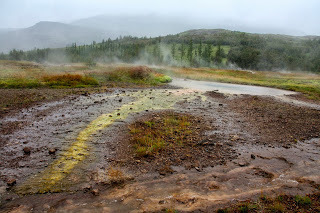
Our first stop was Geysir, a place where overheated water bubbles to the surface from the volcanic rock. At this juncture, I had to accept that I would be wet. I had on a windbreaker that would keep me relatively shielded, but the rain was heavy by now and the wind blew it sideways. My jeans were soaked in no time. But I had no choice. Having come this far, I wouldn’t let a bit of a North Atlantic storm to keep me inside. Furthermore, this whole geothermal business is so important for the country that it was necessary to see the source of it with my own eyes. Some 90 percent of houses in Iceland—and every house in Reykjavik—are heated with geothermal energy. Piped water comes straight from the clean waters underground and therefore hot water has a light but distinct odour of sulphur.
 So I set out to walk towards Strokkur, the most active of the geysers, which spouts a formidable burst of scalding water some 30 metres up into the air every 10-12 minutes releasing the pressure that builds up with water vapour underground. Both sides of the walking path were pitted with holes filled with hot water (it would only take minutes to cook a tourist, Leidur had warned us). The soil and rocks were coloured red and yellow by the iron, sulphur and other minerals oozing from the earth. The landscape had an exquisite melancholy beauty, which I felt the rain accentuated. Fog in the hills mingled with the steam arising from the hot springs. Geysir (which has given English language the word geyser) is a hot spring area that has been active for some 10,000 years, but its activity levels have varied greatly.
So I set out to walk towards Strokkur, the most active of the geysers, which spouts a formidable burst of scalding water some 30 metres up into the air every 10-12 minutes releasing the pressure that builds up with water vapour underground. Both sides of the walking path were pitted with holes filled with hot water (it would only take minutes to cook a tourist, Leidur had warned us). The soil and rocks were coloured red and yellow by the iron, sulphur and other minerals oozing from the earth. The landscape had an exquisite melancholy beauty, which I felt the rain accentuated. Fog in the hills mingled with the steam arising from the hot springs. Geysir (which has given English language the word geyser) is a hot spring area that has been active for some 10,000 years, but its activity levels have varied greatly. After the walk, I relented and headed to the visitor centre, which luckily hosted two bars. I ordered a beer and Icelandic schnapps, which is known as brennivin. As Leidur had said earlier, Iceland has an alcohol policy, which is “extra Norwegian” in its severity, another expression of the Lutheran legacy. Today it really doesn’t limit the availability or consumption of booze, but translates into high prices. Until recently, however, beer was not allowed to be sold in the country on the perverse assumption that it would be so easy to drink that people would be drunk all the time. I remember in the late-1980s when I was a research fellow at the Nordic Africa Institute in Sweden, we would get visiting researchers from Iceland and the first thing they’d do was to rush to the closest bar for a beer. The law was only changed in1989. It was seen to be futile, as bars in Reykjavik had taken to selling alcohol-free beer with brennivin dropped in.
After the walk, I relented and headed to the visitor centre, which luckily hosted two bars. I ordered a beer and Icelandic schnapps, which is known as brennivin. As Leidur had said earlier, Iceland has an alcohol policy, which is “extra Norwegian” in its severity, another expression of the Lutheran legacy. Today it really doesn’t limit the availability or consumption of booze, but translates into high prices. Until recently, however, beer was not allowed to be sold in the country on the perverse assumption that it would be so easy to drink that people would be drunk all the time. I remember in the late-1980s when I was a research fellow at the Nordic Africa Institute in Sweden, we would get visiting researchers from Iceland and the first thing they’d do was to rush to the closest bar for a beer. The law was only changed in1989. It was seen to be futile, as bars in Reykjavik had taken to selling alcohol-free beer with brennivin dropped in.

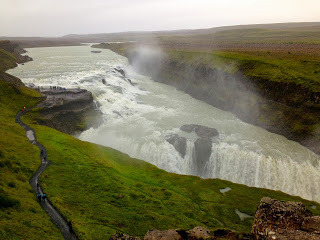 Back on the bus, Leidur told us a story about a country priest who had found a dead pig on the road. Not knowing what to do with it, he called the police from the first automated phone in the country. The officer at the other end quipped: “you’re the priest; aren’t you supposed to bury the dead?” “Certainly, but I always inform the next of kin first,” replied the priest. This was in the mid-1970s. There had been a lot of public opposition to the introduction of automated phones, as that prevented neighbours from listening into telephone conversations.
Back on the bus, Leidur told us a story about a country priest who had found a dead pig on the road. Not knowing what to do with it, he called the police from the first automated phone in the country. The officer at the other end quipped: “you’re the priest; aren’t you supposed to bury the dead?” “Certainly, but I always inform the next of kin first,” replied the priest. This was in the mid-1970s. There had been a lot of public opposition to the introduction of automated phones, as that prevented neighbours from listening into telephone conversations.The following stop was at Gullfoss, a fabulous waterfall, the highest in Iceland. The rain was still coming down in torrential bursts. I was wet and cold, but decided again to take the walk to the waterfall, which definitely was worth it. Gullfoss has two waterfalls with a combined height of 31 metres. The gorge in which it is located is 2.5 km long. The waterfall and the deep gorge below were formed at the end of the last Ice Age when great glacial floods cut through cracks in the volcanic basalt lava layers on top of softer sedimentary rock. Today the average water flow through the cascade is 109 cubic metres per second, but at times it can go up to 2,000 cubic metres per second. I am sure that on this stormy day the flow was well above average.
Luckily there was time for another beer and brennivin combo before with again gathered in the bus. The bext and final stop on our round trip would be Thingvellir, designated a UNESCO world heritage site due to its geologic, historic and cultural significance. This is where the Mid-Atlantic Ridge forms a rift valley that is constantly spreading. The formation is quite remarkable. The view from the top of the crest to the surrounding area is gorgeous. Historically, Thingvellir became the site of the first parliament founded in the year 930. It remained the location of the parliament until 1798. The area also became a central cultural place where people from all over Iceland would gather in the historical times. There would be traders and craftsmen and, natural, it would become fairgrounds where drinks were served and games held.
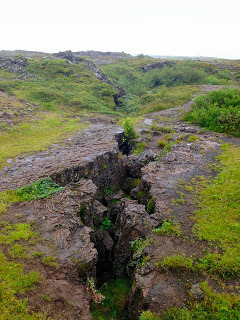
By the time we returned to Reykjavik in early evening I was feeling quite fine. It was warm in the bus and the brennivin was adding to my mellow mood. Back at the hotel, a hot shower with the sulphur-infused water and change into a fresh set of dry cloths got me ready to roll again. By this time the rain had stopped and the temperature was a comfortable 10 degrees Celsius above freezing. I took a stroll around the centre of the city—still quiet but not a ghost town as in the morning—and picked at random a pleasant looking casual restaurant from amongst the many tempting places. A genuinely friendly and attractive young waitress led me to a window table with a view over the rapidly darkening square where a few people were crossing once in a while. I ordered lox as my starter and lamb with herbs for the main course, pairing them with nice white and red wines respectively. It was rather heavenly to sit in the warm and welcoming place, enjoying a superb meal after a wet but interesting day in the stunningly beautiful country. I rounded off the evening with a nightcap in a pub with a live band. Finally, I also found Icelanders who had crept out of their Sunday slumber and wandered out to quench the thirst caused by the previous night’s partying.
In the morning, I slept like a baby in the silent darkness when it was time to get up. I had to catch the 5 am bus to the airport. The driver, a blond young woman, quickly headed out of town onto the straight highway leading west to Keflavik. I relaxed to the monotonous roar of the bus and reflected on my short but pleasant stay in this unique country. I am from the north, so I’m used to darkness and rain. In fact, I find certain solace in them. A few years back, Eric Weiner in his his quest for the happiest places on earth that he describes in the book The Geography of Blissvisited Iceland. At the end of his day, he observed that melancholia and happiness are not mutually exclusive or opposites in any way. I have always known this.

Finally, the lights of Keflavik came into view like a bright twinkling string floating above the still dark horizon. What a lovely sight.
Published on September 27, 2013 12:49
September 13, 2013
September 10, 2013
3x5 Folded CardView the entire collection of cards.
Published on September 10, 2013 18:45
Click here to view this photo book largerThe new way to m...
Click here to view this photo book largerThe new way to make a photo album: photo books by Shutterfly.
Published on September 10, 2013 18:42
MagnetView the entire collection of cards.
Published on September 10, 2013 18:33
August 23, 2013
Minamata - from mercury victim to savior
In January 2013, governments agreed to a legally binding global instrument to govern mercury use. The Minamata Convention on Mercury was born after a four-year period of negotiation. Almost 30 national governments from the North and the South have provided financial support to the establishment and implementation of the Convention. The Government of Japan—alongside Norway, Switzerland, USA, Uruguay, and the Nordic Council of Ministers and the European Union—is one of the big sponsors of the Convention that bears the name of a small fishing village in Japan that came to be synonymous to environmental pollution. Japan has come a long way from the days when Minamata pitted the national and local government against the victims of Minamata disease and their advocates, becoming a highly divisive issue in the island nation.
Minamata is close to my heart for many reasons. It touches upon concerns that are central to me, namely ecosystem health and trampling on local people’s rights by big business and authoritative government. In brief, the history of the Minamata pollution case is as follows. In 1956, four patients with severe but undiagnosed symptoms were brought to the Minamata City Hospital on the southwestern Japanese island of Kyushu. All had similar symptoms, including severe convulsions, high fever and intermittent loss of consciousness, before they lapsed into coma and died. As this disease was undiagnosed, a local doctor, Dr. Hajime Hosokawa, started investigations into the cases and engaged local health centers in an epidemiological study. He found that in the nearby fishing villages altogether 17 other people had died of similar attacks. There were also reports of local cats succumbing to the ailment following uncontrolled convulsions.
What all of the victims had in common was that they all had consumed large amounts of fish and seafood from the Minamata bay. The epidemiologists soon honed in on environmental pollution as the cause of the disease. Studies found that the sludge from the bay contained high concentrations of various industrial chemicals, so the researchers contacted Chisso, a chemical company that had its plant in Minamata. From the very beginning, Chisso was uncooperative and refused to release any information to the researchers. It was clear, however, that for many years Chisso had released its untreated wastewater directly into Minamata bay. Similarly, Kumamoto University engineering department that had collaborated with Chisso stonewalled the medical researchers. When the medical team released its findings that showed that the probable cause for the disease and deaths was heavy metal poisoning, Chisso produced its own report that disputed these findings.
Finally, the medical team was able to conclude that the culprit beyond any doubt was methyl mercury that the chemical plant had discharged into the bay. There were massive concentrations of mercury in the sludge from the bay, as well as in the fish and the people who had died from eating it. The epidemiological study was able to produce a conclusive map showing one-to-one distribution of the poisoned fish and the occurrence of the disease. The company had kept its use of mercury in the plant as an industrial secret. Chisso continued its own studies but in 1959 was forced to conclude tentatively that mercury was, indeed, the likely cause of Minamata disease.
Case closed, one would think. Far from it, as it turned out. Chisso was the main source of income for the remote region that had suffered greatly in the Pacific War. Following the war, Japan adopted a self-sacrificing strategy to rebuild at a frantic pace and at any cost catch up with the West. General Douglas MacArthur ruled in an imperious way in Tokyo as the Supreme Commander of the Allied Powers occupying Japan promoting American values and morals. It had been decided not to punish many of the militarists from wartime Japan, especially the wealthy industrialists who had supported Japan’s military ventures, so as to support quick economic development. Japan would be formed into a Western-oriented bulwark against the communists in China, Russia and North Korea (MacArthur was later relieved of his duties as the commander of the American forces in the Korean War by President Truman, partly because of the former’s suggestion to use the atomic bomb against the communist targets). The Japanese wholeheartedly agreed: democracy should not come in the way of this project. People’s rights and the natural environment were secondary considerations to be sacrificed for economic growth.
Consequently, Chisso’s success was to be protected. Although the link between its waste disposal and the increasingly widespread Minamata disease causing the death of numerous people was undisputed, the plant continued to release mercury into the bay until 1968. The community in and around Minamata was conflicted. Many people depended on the industry for their livelihood and the victims tended to be poor fisherman families from the coast. The fact that the terribly painful disease caused physical and mental symptoms, such as grotesque convulsions and lapses into crazed mental states, further contributed to the fact that many of those not affected considered the victims freaks who should not be allowed to derail progress.
An American photographer Eugene Smith documented the suffering of the victims in powerful photographs, which touched me deeply. In 1972 he was physically attacked by Chisso employees trying to stop him from publicizing the case to the outside world. Chisso throughout refused to negotiate directly with the victims and insisted on third party mediation by the local and national governments. These clearly sided with the company to ward off any lawsuits that were being put forward by the victims and their advocates.
Funding was cut from research teams working on the Minamata disease. Academics, such as Jun Ui, who conducted research around the issue from a social science point of view were ostracized by the establishment. A brilliant writer and a conscientious researcher, Prof. Ui was unable to secure tenure in Tokyo or anywhere in mainland Japan and finally ended up in the University of Okinawa in the Ryukyu archipelago halfway towards Taiwan.
In 1990 I moved to Japan and only a few months later became involved in the Minamata case. I was working with the United Nations University in Tokyo as coordinator of environmental research when we were approached by officials from the Kumamoto prefectural government where Minamata is located asking our cooperation to turn Minamata’s reputation from an environmental disaster to an environmental model. The then vice-rector Prof. Roland Fuchs and I traveled to Kumamoto and Minamata to learn about the plans. This was still a time when legal cases from the pollution events in the 1950s and 1960s were lingering in the courts unresolved, but the local government had decided to move on. True to Japanese approach to things, technology and engineering were to be the solutions. The entire bottom of the semi-enclosed Minamata bay had been dredged and the polluted sludge had been sealed off by a plastic sheet, which then was covered by clean soil. The opening of the bay to the ocean was blocked by a net, which would prevent fish from crossing and spreading pollution. A bamboo forest was being created to symbolize harmony with the nature. Our local government hosts, Mr. Tanaka, a serious young man, and his boss, more animated Mr. Kamakura, were very proud of the work being undertaken—and rightly so.
It struck me how beautiful the natural landscape in Minamata was. There were no major signs of environmental pollution and the industry didn’t dominate the scenery. We flew in through the southern city of Kagoshima, over the active volcano Sakurajima that was sending up plumes of white smoke even as we landed; then drove up the western coast of Kyushu on a road between forested mountains and the sea. Minamata itself was a quiet and peaceful town by the secluded bay. It was easy to see why the pollution had had so drastic impacts in the area, as the bay was really self-contained and the outlet to the wider ocean quite narrow. I remember taking morning walks on this and several later visits in the years to come around a small island just off the coast connected by a narrow causeway and enjoying the complete peacefulness. Of course, a partial cause of the peacefulness was that the area had been somewhat depopulated as a consequence of the disaster and the later decline of Chisso.
The government had built a multipurpose hall with hotel facilities on the site. The modern complex was complete with a karaoke bar with beautiful hostesses imported from the Philippines. We visited the National Minamata Disease Research Institute that had been established in the vicinity. As the facts were still being obscured and the government insisted on such low numbers of proven victims from the pollution that they seemed highly improbable to us, we asked the doctor in charge of the research institute what he thought were the real numbers. “Virtually everyone living in this region was affected to a smaller or a larger degree,” he responded with a convulsive tick to his eye.
We agreed to cooperate with the local government in organizing an international conference in the new hall in Minamata, provided that we would be fully in charge of selecting the international speakers and that they would have complete academic freedom to speak about the issues. This was agreed to and we were hosted to a fabulous seafood dinner in a traditional inn by the mayor of Minamata City. Given that mercury and other heavy metals don’t just disappear from the nature in a few years or decades, I remember observing with Roland whether our meal would glow suspiciously in the semi-darkness of the dining room.
The conference on ‘Industry, the environment and human health’ was held in November 1991. The two-day meeting featured keynote speeches by experts on global mercury pollution, Dr. Jerome Nriagu of Environment Canada and Prof. Phillippe Grandjean of Odense University in Denmark. There was a session focusing on the Minamata case with leading Japanese researchers, including Dr. Masazumi Harada of Kumamoto University, and the second day was largely dedicated to exploring similar problems from other parts of the world. One of the speakers was Prof. Geraldo de Assis Guimarães who had studied the impacts of widespread mercury use in gold extraction in the Amazon region. Prof. Guimarães was a warm somewhat pudgy man, speaking from his heart about the subject he had dedicated his life to. His English was good but spoken with a strong Brazilian accent and we came to appreciate his favorite phrase: “This is very important!”
Although it was a scientific conference, the event attracted a large audience of around 1,000 people, mostly local inhabitants, and was covered widely by the media, including several Japanese TV stations, demonstrating the interest that Minamata disease continued to raise. It was heartening to meet with the local people and to witness their dedication to environmental issues. The international participants were also taken to visits to the National Minamata Disease Research Institute, the Meisuien rehabilitation institute for the victims, and even to Chisso Corporation, which now was collaborating in the environmental rehabilitation, while still resisting any responsibility for the original cause.
The conference was a great success and it was celebrated with a lavish party held in a fabulous garden restaurant on a hill overlooking Minamata bay. Kamakura-san was ecstatic, gulping sake and dancing the night away with anyone who wanted to join or by himself if needed. When the exclusive fireworks started from a barge on the bay, Prof. Guimarães approached me with a glass in hand. “This is very important,” he intoned with a broad smile.
The scientific advisor to the conference, Richard Carpenter emphasized the necessity of risk assessment. Although the engineering works in the bay appeared solid, it would still be important to monitor the condition and the effectiveness of the sheet in place to contain the polluted sludge. The government representatives wanted to downplay this aspect and objected to including the recommendation into the report of the conference, so that it would not alarm the citizens and draw attention to a possible risk in the perfect rehabilitation plan. Although the event was fully financed by the authorities, we invoked our agreement regarding academic freedom and included the damning segment in the report. For a while it strained our relationship, but it was soon mended and we had the pleasure of cooperating with Kamakura and Tanaka on a second Minamata environmental conference already the following year.
The Minamata case continued to be fought in the courts. The judiciary branch in Japan doesn’t enjoy quite the same extent of independence as in the West and it was obvious that the plaintiffs were facing an uphill struggle, despite an initial victory in a first suit for compensation in 1967. The legal cases lingered for many long years as a consequence of deliberate delaying tactics. It was only in July 1994 when the Osaka District Court finally decided on a suit filed by 59 plaintiffs in 1982 ordering Chisso to pay rather low compensation (¥3-8 million—or about US$30,000-80,000—per surviving victim), while entirely exonerating the national and Kumamoto prefectural governments from any responsibility. By the time of the verdict, 16 of the plaintiffs had already died. In the following year, 1995, there was a mediated settlement reached between the main group of some 2,000 Minamata disease victims and the government.
So it is more than comforting that a new global Convention on Mercury is named after Minamata and strongly backed by the Japanese government. The Convention will open for signature by governments in Minamata in the coming October. In the meantime, the governments negotiating the Convention selected the Global Environment Facility to serve as the key element of the financial mechanism of the treaty. This is another personal connecting point, as when I left the UN University in 1999, I joined the GEF in its monitoring and evaluation unit in Washington, DC. As it happened, Roland Fuchs was also living in the national capital region by then and we could continue our interactions there. But that’s another story.
Minamata is close to my heart for many reasons. It touches upon concerns that are central to me, namely ecosystem health and trampling on local people’s rights by big business and authoritative government. In brief, the history of the Minamata pollution case is as follows. In 1956, four patients with severe but undiagnosed symptoms were brought to the Minamata City Hospital on the southwestern Japanese island of Kyushu. All had similar symptoms, including severe convulsions, high fever and intermittent loss of consciousness, before they lapsed into coma and died. As this disease was undiagnosed, a local doctor, Dr. Hajime Hosokawa, started investigations into the cases and engaged local health centers in an epidemiological study. He found that in the nearby fishing villages altogether 17 other people had died of similar attacks. There were also reports of local cats succumbing to the ailment following uncontrolled convulsions.
What all of the victims had in common was that they all had consumed large amounts of fish and seafood from the Minamata bay. The epidemiologists soon honed in on environmental pollution as the cause of the disease. Studies found that the sludge from the bay contained high concentrations of various industrial chemicals, so the researchers contacted Chisso, a chemical company that had its plant in Minamata. From the very beginning, Chisso was uncooperative and refused to release any information to the researchers. It was clear, however, that for many years Chisso had released its untreated wastewater directly into Minamata bay. Similarly, Kumamoto University engineering department that had collaborated with Chisso stonewalled the medical researchers. When the medical team released its findings that showed that the probable cause for the disease and deaths was heavy metal poisoning, Chisso produced its own report that disputed these findings.
Finally, the medical team was able to conclude that the culprit beyond any doubt was methyl mercury that the chemical plant had discharged into the bay. There were massive concentrations of mercury in the sludge from the bay, as well as in the fish and the people who had died from eating it. The epidemiological study was able to produce a conclusive map showing one-to-one distribution of the poisoned fish and the occurrence of the disease. The company had kept its use of mercury in the plant as an industrial secret. Chisso continued its own studies but in 1959 was forced to conclude tentatively that mercury was, indeed, the likely cause of Minamata disease.
Case closed, one would think. Far from it, as it turned out. Chisso was the main source of income for the remote region that had suffered greatly in the Pacific War. Following the war, Japan adopted a self-sacrificing strategy to rebuild at a frantic pace and at any cost catch up with the West. General Douglas MacArthur ruled in an imperious way in Tokyo as the Supreme Commander of the Allied Powers occupying Japan promoting American values and morals. It had been decided not to punish many of the militarists from wartime Japan, especially the wealthy industrialists who had supported Japan’s military ventures, so as to support quick economic development. Japan would be formed into a Western-oriented bulwark against the communists in China, Russia and North Korea (MacArthur was later relieved of his duties as the commander of the American forces in the Korean War by President Truman, partly because of the former’s suggestion to use the atomic bomb against the communist targets). The Japanese wholeheartedly agreed: democracy should not come in the way of this project. People’s rights and the natural environment were secondary considerations to be sacrificed for economic growth.
Consequently, Chisso’s success was to be protected. Although the link between its waste disposal and the increasingly widespread Minamata disease causing the death of numerous people was undisputed, the plant continued to release mercury into the bay until 1968. The community in and around Minamata was conflicted. Many people depended on the industry for their livelihood and the victims tended to be poor fisherman families from the coast. The fact that the terribly painful disease caused physical and mental symptoms, such as grotesque convulsions and lapses into crazed mental states, further contributed to the fact that many of those not affected considered the victims freaks who should not be allowed to derail progress.
An American photographer Eugene Smith documented the suffering of the victims in powerful photographs, which touched me deeply. In 1972 he was physically attacked by Chisso employees trying to stop him from publicizing the case to the outside world. Chisso throughout refused to negotiate directly with the victims and insisted on third party mediation by the local and national governments. These clearly sided with the company to ward off any lawsuits that were being put forward by the victims and their advocates.
Funding was cut from research teams working on the Minamata disease. Academics, such as Jun Ui, who conducted research around the issue from a social science point of view were ostracized by the establishment. A brilliant writer and a conscientious researcher, Prof. Ui was unable to secure tenure in Tokyo or anywhere in mainland Japan and finally ended up in the University of Okinawa in the Ryukyu archipelago halfway towards Taiwan.
In 1990 I moved to Japan and only a few months later became involved in the Minamata case. I was working with the United Nations University in Tokyo as coordinator of environmental research when we were approached by officials from the Kumamoto prefectural government where Minamata is located asking our cooperation to turn Minamata’s reputation from an environmental disaster to an environmental model. The then vice-rector Prof. Roland Fuchs and I traveled to Kumamoto and Minamata to learn about the plans. This was still a time when legal cases from the pollution events in the 1950s and 1960s were lingering in the courts unresolved, but the local government had decided to move on. True to Japanese approach to things, technology and engineering were to be the solutions. The entire bottom of the semi-enclosed Minamata bay had been dredged and the polluted sludge had been sealed off by a plastic sheet, which then was covered by clean soil. The opening of the bay to the ocean was blocked by a net, which would prevent fish from crossing and spreading pollution. A bamboo forest was being created to symbolize harmony with the nature. Our local government hosts, Mr. Tanaka, a serious young man, and his boss, more animated Mr. Kamakura, were very proud of the work being undertaken—and rightly so.
It struck me how beautiful the natural landscape in Minamata was. There were no major signs of environmental pollution and the industry didn’t dominate the scenery. We flew in through the southern city of Kagoshima, over the active volcano Sakurajima that was sending up plumes of white smoke even as we landed; then drove up the western coast of Kyushu on a road between forested mountains and the sea. Minamata itself was a quiet and peaceful town by the secluded bay. It was easy to see why the pollution had had so drastic impacts in the area, as the bay was really self-contained and the outlet to the wider ocean quite narrow. I remember taking morning walks on this and several later visits in the years to come around a small island just off the coast connected by a narrow causeway and enjoying the complete peacefulness. Of course, a partial cause of the peacefulness was that the area had been somewhat depopulated as a consequence of the disaster and the later decline of Chisso.
The government had built a multipurpose hall with hotel facilities on the site. The modern complex was complete with a karaoke bar with beautiful hostesses imported from the Philippines. We visited the National Minamata Disease Research Institute that had been established in the vicinity. As the facts were still being obscured and the government insisted on such low numbers of proven victims from the pollution that they seemed highly improbable to us, we asked the doctor in charge of the research institute what he thought were the real numbers. “Virtually everyone living in this region was affected to a smaller or a larger degree,” he responded with a convulsive tick to his eye.
We agreed to cooperate with the local government in organizing an international conference in the new hall in Minamata, provided that we would be fully in charge of selecting the international speakers and that they would have complete academic freedom to speak about the issues. This was agreed to and we were hosted to a fabulous seafood dinner in a traditional inn by the mayor of Minamata City. Given that mercury and other heavy metals don’t just disappear from the nature in a few years or decades, I remember observing with Roland whether our meal would glow suspiciously in the semi-darkness of the dining room.
The conference on ‘Industry, the environment and human health’ was held in November 1991. The two-day meeting featured keynote speeches by experts on global mercury pollution, Dr. Jerome Nriagu of Environment Canada and Prof. Phillippe Grandjean of Odense University in Denmark. There was a session focusing on the Minamata case with leading Japanese researchers, including Dr. Masazumi Harada of Kumamoto University, and the second day was largely dedicated to exploring similar problems from other parts of the world. One of the speakers was Prof. Geraldo de Assis Guimarães who had studied the impacts of widespread mercury use in gold extraction in the Amazon region. Prof. Guimarães was a warm somewhat pudgy man, speaking from his heart about the subject he had dedicated his life to. His English was good but spoken with a strong Brazilian accent and we came to appreciate his favorite phrase: “This is very important!”
Although it was a scientific conference, the event attracted a large audience of around 1,000 people, mostly local inhabitants, and was covered widely by the media, including several Japanese TV stations, demonstrating the interest that Minamata disease continued to raise. It was heartening to meet with the local people and to witness their dedication to environmental issues. The international participants were also taken to visits to the National Minamata Disease Research Institute, the Meisuien rehabilitation institute for the victims, and even to Chisso Corporation, which now was collaborating in the environmental rehabilitation, while still resisting any responsibility for the original cause.
The conference was a great success and it was celebrated with a lavish party held in a fabulous garden restaurant on a hill overlooking Minamata bay. Kamakura-san was ecstatic, gulping sake and dancing the night away with anyone who wanted to join or by himself if needed. When the exclusive fireworks started from a barge on the bay, Prof. Guimarães approached me with a glass in hand. “This is very important,” he intoned with a broad smile.
The scientific advisor to the conference, Richard Carpenter emphasized the necessity of risk assessment. Although the engineering works in the bay appeared solid, it would still be important to monitor the condition and the effectiveness of the sheet in place to contain the polluted sludge. The government representatives wanted to downplay this aspect and objected to including the recommendation into the report of the conference, so that it would not alarm the citizens and draw attention to a possible risk in the perfect rehabilitation plan. Although the event was fully financed by the authorities, we invoked our agreement regarding academic freedom and included the damning segment in the report. For a while it strained our relationship, but it was soon mended and we had the pleasure of cooperating with Kamakura and Tanaka on a second Minamata environmental conference already the following year.
The Minamata case continued to be fought in the courts. The judiciary branch in Japan doesn’t enjoy quite the same extent of independence as in the West and it was obvious that the plaintiffs were facing an uphill struggle, despite an initial victory in a first suit for compensation in 1967. The legal cases lingered for many long years as a consequence of deliberate delaying tactics. It was only in July 1994 when the Osaka District Court finally decided on a suit filed by 59 plaintiffs in 1982 ordering Chisso to pay rather low compensation (¥3-8 million—or about US$30,000-80,000—per surviving victim), while entirely exonerating the national and Kumamoto prefectural governments from any responsibility. By the time of the verdict, 16 of the plaintiffs had already died. In the following year, 1995, there was a mediated settlement reached between the main group of some 2,000 Minamata disease victims and the government.
So it is more than comforting that a new global Convention on Mercury is named after Minamata and strongly backed by the Japanese government. The Convention will open for signature by governments in Minamata in the coming October. In the meantime, the governments negotiating the Convention selected the Global Environment Facility to serve as the key element of the financial mechanism of the treaty. This is another personal connecting point, as when I left the UN University in 1999, I joined the GEF in its monitoring and evaluation unit in Washington, DC. As it happened, Roland Fuchs was also living in the national capital region by then and we could continue our interactions there. But that’s another story.
Published on August 23, 2013 14:23
June 2, 2013
Tokyo to New York @ Spectrum, June 2, 2013
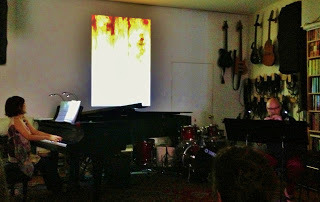 On this hot and muggy first Sunday of the summer I took myself across the Williamsburg Bridge to Lower East Side to cool down with contemporary music. As I was early, I took a walk around the block. On the next block on Orchard Street there was a street fair with many stalls selling food and other stuff. All of the many bars had their fronts open and thirsty customers were sitting with their beer mugs observing the procession of scantily clad denizens on the street.
On this hot and muggy first Sunday of the summer I took myself across the Williamsburg Bridge to Lower East Side to cool down with contemporary music. As I was early, I took a walk around the block. On the next block on Orchard Street there was a street fair with many stalls selling food and other stuff. All of the many bars had their fronts open and thirsty customers were sitting with their beer mugs observing the procession of scantily clad denizens on the street.At Spectrumon Ludlow Street the atmosphere was much more subdued. A couple of dozen people had gathered in the long and dark living room where a stage was established at the far end. The side walls were lined with bookshelves. On the right side, they were filled with books; the left side was covered by thousands of CDs. I sat down on a comfortable black sofa next to the CDs and took a long sip of the aloe mango juice I had bought on the street. The occasion was a concert—Tokyo to New York—displaying new music by Japanese and American composers. The performance featured music by more than 20 contemporary composers ranging in age from early-20s to mid-80s. There were three musicians—Thomas Piercy, Mika Tanaka and Elizabeth Brown—performing on Western and Japanese instruments. The secret behind the darkness in the room turned out to be that the music was combined with a show of photographs arranged by Christina Boers projected on the back wall.
The first segment of the concert started with a solo piece ‘Mienai Sakebigoe’ on hichiriki written and performed by Piercy. This moved on to a piece by Masatora Goya, ‘Toro Nagashi’, which had Tanaka join the hichriki, playing delicate ornaments on the piano. Hichiriki, a Japanese double reed instrument used traditionally in ancient gagaku court music, has a flexible pitch and a nasal sound vaguely reminiscent of oboe. With Piercy switching to clarinet, the duo performed a U.S. premier of a piece by Akira Uchida, the soothing and hauntingly beautiful ‘New Moon’. This part of the concert ended with a hectic piece by Katsuhiro Oguri called ‘Movement 2012’ (also a U.S. premier, like several of the tunes following), depicting the chaos of New York City traffic. The photographs that accompanied it were on the same topic. The first theme of the piece culminated in a climax with a long high tone from the clarinet matching a photograph of a black man showing an equally piercing middle finger. This launched Tanaka into an atonal boogie on the piano, which appealed to my jazz sensibilities.
After the duo finished their frantic performance, Elizabeth Brown followed with a shakuhachi solo from her own Isle Royale suite. This one was ‘Loons’, a serene piece of beautiful work for the vertical bamboo flute.
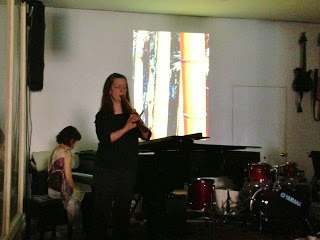
The second segment of the concert featured eleven short pieces by as many composers drawn from a series of more than 50 commissioned one-minute works under the title ‘Nihon no Shiten’. The composers were Armando Ayala, Greg Bartholomew, John Bilotta, Andy Cohen, Douglas DaSilva, Andrew Davis, Jim Fox, Michael Frazier, Nina Sinakova, Daniel J. Thompson and David Wolfson. They varied between lyrical and quirky.
Another interlude followed with Brown playing another part of her bird-themed suite, ‘Black-throated blue warbler’. I have heard her play parts of the suite before in an earlier concert and can appreciate the beauty of the nature-inspired music that utilizes the unique timbre of the bamboo. The shakuhachi is a difficult instrument (Elizabeth and I talked about it briefly before the concert agreeing that it made the Western flute feel simple and straightforward) but she has established a beautiful sound and command of the instrument.
The final part of the concert started with Mika Tanaka playing her own solo composition, ‘In the Garden’, a lovely but not a radical tune. Then followed five duo pieces: ‘YUU’ by Yohei Kurihara, ‘Sketch from Japan’ by Kazushi Iwaoka, ‘You’ by Mieko Ishii, ‘Old Men Waltz’ by Yoshihiko Banno, and ‘Space’ by Kyoko Yamaguchi. I particularly enjoyed Iwaoka’s ‘Sketch’, which utilized alternately Japanese and Western scales seamlessly contrasting the two modes. ‘Old Men Waltz’, a melancholy atmospheric piece was to me one of the high points of the afternoon. Its theme referred to the inevitability of old men waltzing away from the scene, making way to younger men; an inevitability understood by both the young and the old.
The final piece of the concert, ‘Amalgam – A’ by Hifumi Shimoyama was very interesting because it brought together shakuhachi, clarinet and piano producing very unique, surprising tonalities. Piercy explained how he had visited Shimoyama at his home in Tokyo. The composer lives in a modern high rise. When you enter his apartment, to the left is a highly modern, stylish living space, while on the right you enter into a traditional Japanese abode. This dichotomy is also evident in his music.
Meanwhile, on the sweltering street the Lower East Side was alive. Although the sun was not yet setting, there were lines to venues with live music of a different variety as I headed towards the subway on Delancey. I was glad that I had cooled off the afternoon at the Spectrum where I had been both stimulated and calmed down.
Published on June 02, 2013 18:33






